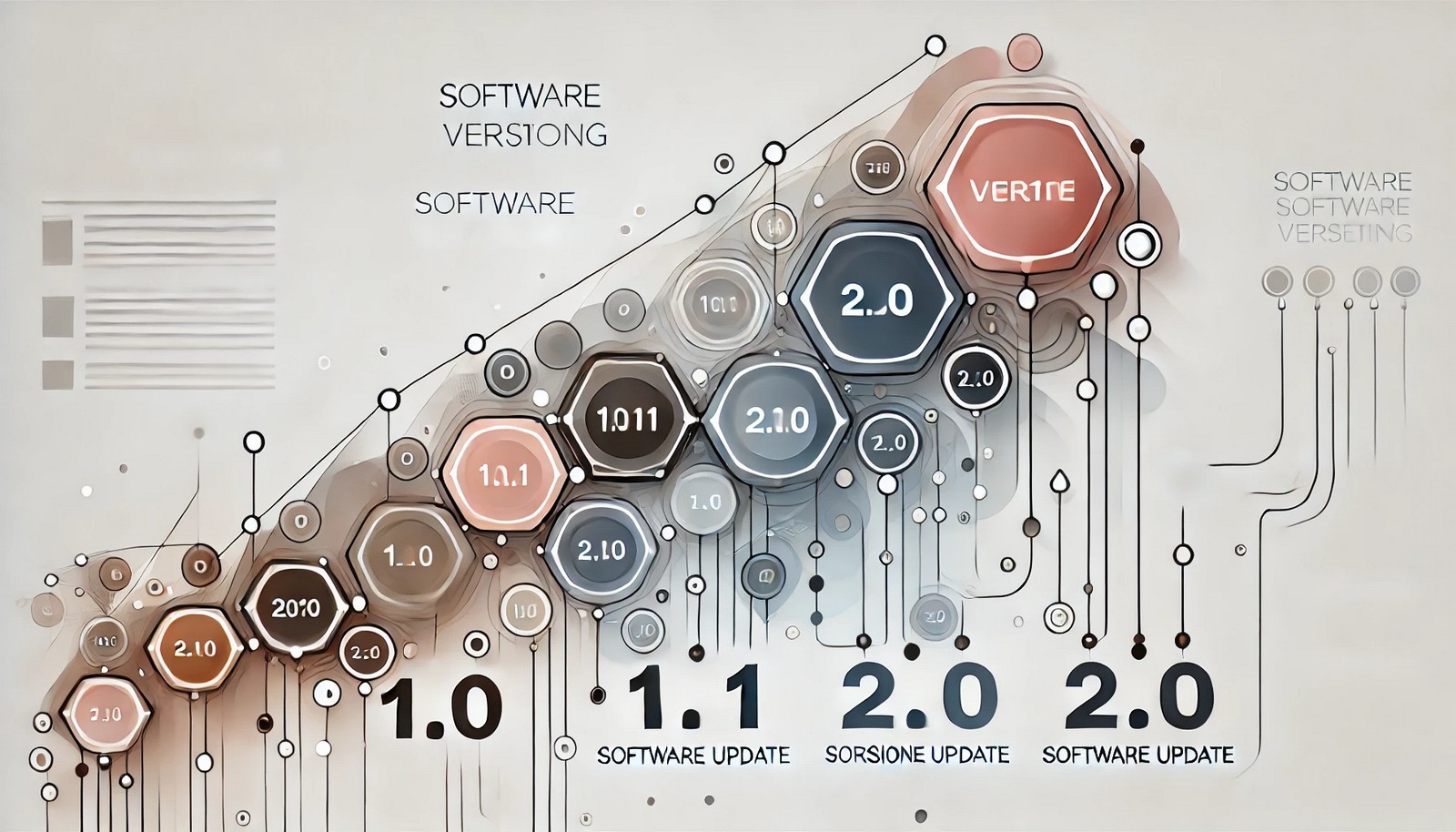Versioning Standards
 (Representational Image | Source: Dall-E)
(Representational Image | Source: Dall-E)
Quick Navigation:
- Versioning Standards Definition
- Versioning Standards Explained Easy
- Versioning Standards Origin
- Versioning Standards Etymology
- Versioning Standards Usage Trends
- Versioning Standards Usage
- Versioning Standards Examples in Context
- Versioning Standards FAQ
- Versioning Standards Related Words
Versioning Standards Definition
Versioning standards refer to the structured approach used to assign unique version numbers to software or digital products. These standards help developers and users track changes, ensure compatibility, and manage updates efficiently. Commonly used versioning models include Semantic Versioning (SemVer), CalVer (Calendar Versioning), and Incremental Versioning. The choice of a versioning standard depends on the software's purpose, development cycle, and backward compatibility considerations.
Versioning Standards Explained Easy
Imagine you're playing a video game and you see updates like 1.0, 1.1, 2.0. These numbers help players know whether the update is small (like fixing a bug) or big (like adding new levels). Versioning standards work the same way for software. They help developers and users understand changes and keep things running smoothly.
Versioning Standards Origin
The need for structured versioning emerged alongside software development in the mid-20th century. Early software versions were labeled with simple numbers (e.g., Version 1, Version 2). However, as software became more complex, more systematic versioning methods, such as Semantic Versioning, were introduced to provide clarity on backward compatibility and feature changes.
Versioning Standards Etymology
The word “version” originates from the Latin versio, meaning "a turning" or "change." In computing, it refers to sequential updates or modifications made to software.
Versioning Standards Usage Trends
With the rise of continuous integration (CI/CD) and agile development, versioning standards have evolved to support frequent and structured software updates. Semantic versioning has become the industry norm for open-source projects, while calendar-based versioning is commonly used for operating systems like Ubuntu and major enterprise applications.
Versioning Standards Usage
- Formal/Technical Tagging:
- Software Development
- Software Lifecycle Management
- Release Management
- Typical Collocations:
- "Semantic versioning scheme"
- "Software release versioning"
- "Backward compatibility in versioning"
- "Incremental version updates"
Versioning Standards Examples in Context
- A software company releases Version 2.1.0, indicating a minor feature update.
- Google Chrome follows an incremental versioning approach, with frequent updates labeled as Chrome 120, 121, etc.
- An API specifies Version 1.3.2, meaning bug fixes were applied without breaking existing functionality.
Versioning Standards FAQ
- What is versioning in software development?
Versioning is the practice of assigning numbers to software updates to track changes and maintain compatibility. - What is Semantic Versioning (SemVer)?
Semantic Versioning follows a structured format: MAJOR.MINOR.PATCH (e.g., 2.1.3). - How does Calendar Versioning (CalVer) work?
CalVer uses a date-based format like 2024.3.15 to indicate when a version was released. - Why is versioning important?
It helps users and developers manage updates, avoid compatibility issues, and track software changes. - How do I choose a versioning system?
The choice depends on factors like update frequency, compatibility concerns, and project scope. - What is a breaking change in versioning?
A breaking change is an update that is not backward-compatible and may require users to modify their systems. - Can I downgrade software to an older version?
Yes, but it depends on the software. Some applications allow rollback, while others do not. - How do open-source projects handle versioning?
Most follow Semantic Versioning (SemVer) to ensure transparency and consistency. - Why do some software versions skip numbers?
Developers may skip versions to align with marketing strategies or to indicate major transitions. - What is the difference between alpha, beta, and stable versions?
Alpha: Early-stage development, not fully functional.
Beta: More stable but may have bugs.
Stable: Fully tested and ready for general use.
Versioning Standards Related Words
- Categories/Topics:
- Software Release Management
- Version Control Systems
- API Versioning
Did you know?
Microsoft Windows skipped Version 9 and went directly from Windows 8 to Windows 10. One reason was to avoid compatibility issues with legacy software that detected "Windows 9*" as Windows 95 or 98.
Authors | Arjun Vishnu | @ArjunAndVishnu

PicDictionary.com is an online dictionary in pictures. If you have questions or suggestions, please reach out to us on WhatsApp or Twitter.
I am Vishnu. I like AI, Linux, Single Board Computers, and Cloud Computing. I create the web & video content, and I also write for popular websites.
My younger brother, Arjun handles image & video editing. Together, we run a YouTube Channel that's focused on reviewing gadgets and explaining technology.
















Comments (0)
Comments powered by CComment